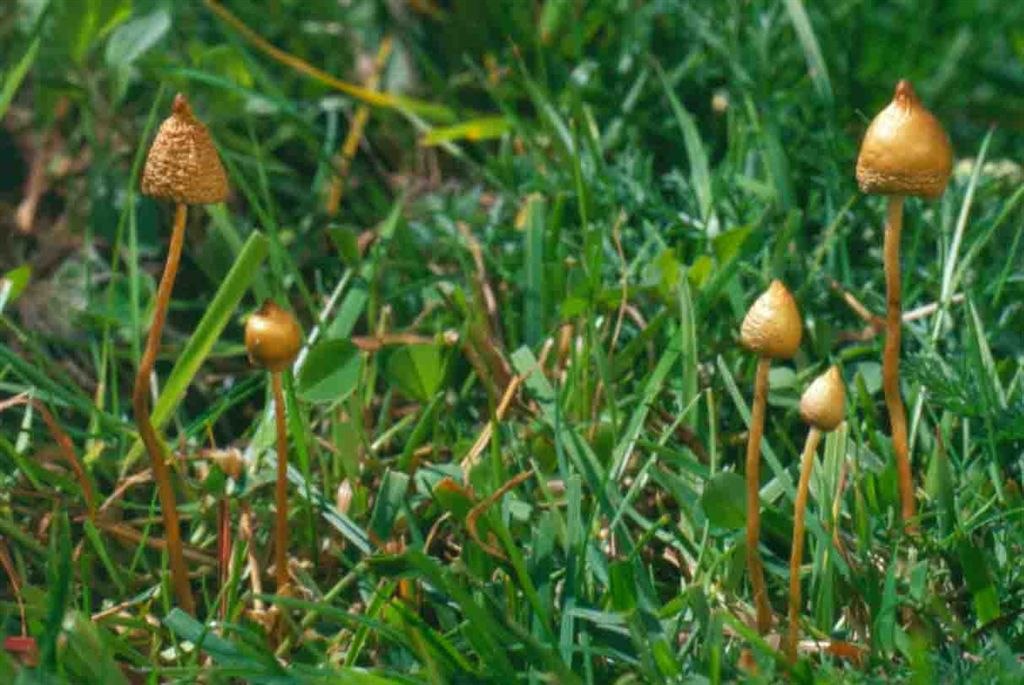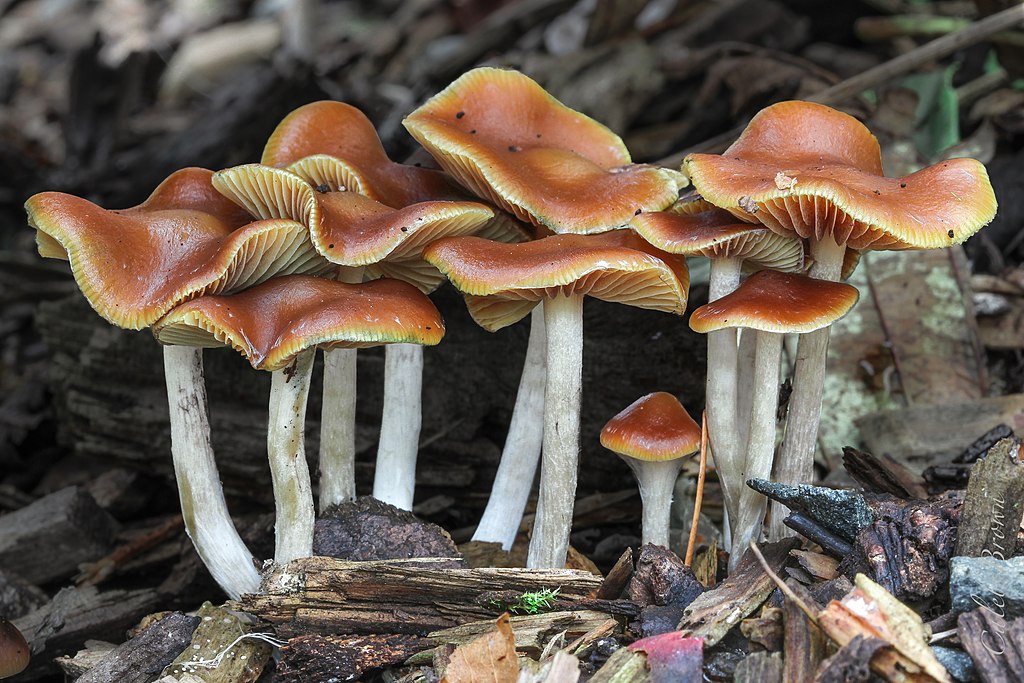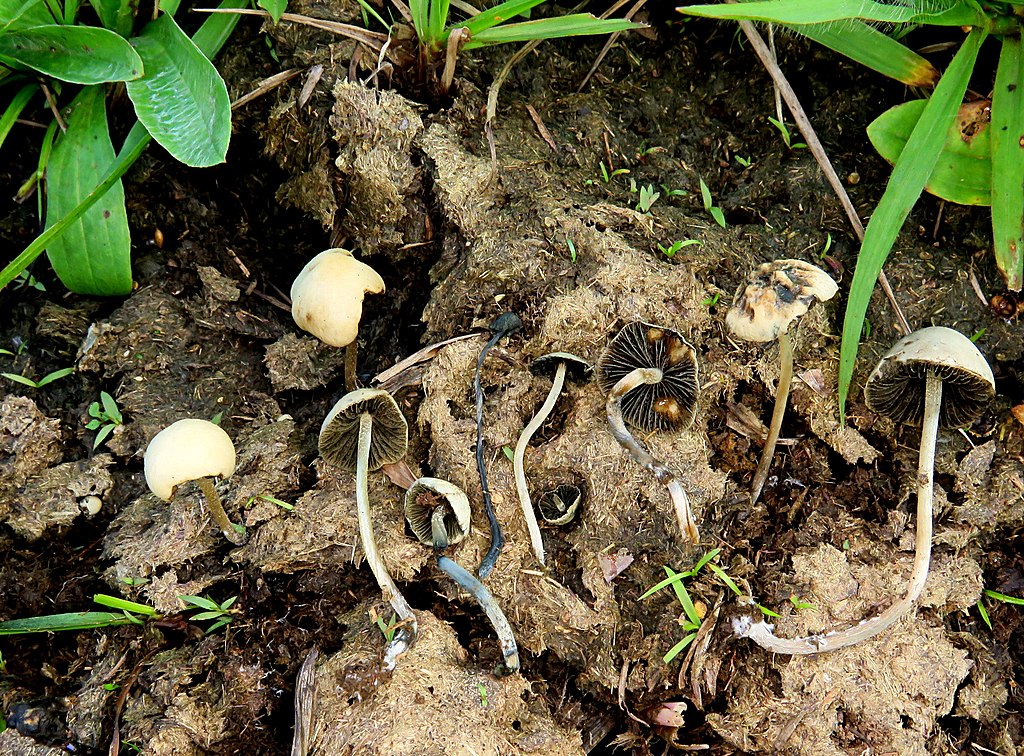People use psychedelic mushrooms for a variety of reasons, most commonly to experience spiritual growth and insight, creative exploration, enhanced feelings of relaxation and wellbeing, or simply to enjoy the altered states that they provide. In this article, we’ll explore some of the most potent psychedelic mushroom strains available, including some you may heard of, like wavy caps, liberty caps, and blue meanies.
But first, a quick recap on what exactly induces the psychedelic effects we’re referring to.
Psilocybin and Psilocin
Psilocybin is a naturally occurring psychedelic compound produced by more than 200 species of mushrooms, collectively known as psilocybin mushrooms. When consumed, psilocybin is converted into psilocin. Psilocin is actually what produces the powerful psychedelic experience many people associate with psychedelic mushrooms. Effects can include altered perceptions of time and space, vivid visual and auditory hallucinations, enhanced empathy and emotions, and spiritual or mystical experiences.
Mushroom strains each contain varying amounts of psilocybin and psilocin. Not surprisingly, the ones that contain higher levels of psilocin are typically reported to have more potent effects. That said, ranking the most potent psychedelic mushroom strains isn’t an exact science. The exact amounts of psilocybin and psilocin will always vary depending on growing conditions, and there is still debate among psychonauts about which strains are truly the most potent.
With that disclaimer out of the way, let’s dig in.
Psilocybe Azurescens
Psilocybe azurescens are among the most potent psychedelic mushroom strains, containing up to 1.8% psilocybin and 0.5% psilocin. They also contain high levels of baeocystin, which some believe contributes to their psychedelic effects.

These mushrooms typically grow in clusters or groups near dune grasses and sandy soil that has been disturbed by coastal winds. They can also sometimes be found growing alongside hardwoods and conifers in wooded areas near bodies of water. Psilocybe azurescens most commonly fruit during autumn but can also be found during late summer depending on the weather conditions.
Psilocybe azurescens are most easily identified by their caramel brown caps and long, thin white stems. Like many psychedelic mushrooms, they have a deep blue coloration that is most visible when the mushroom is bruised or damaged. The cap is typically three to ten centimetres across, and the stem can reach lengths of up to twelve centimetres long. The gills are closely spaced and deeply decurrent, meaning they run down along the stem.
Psilocybe semilanceata
Psilocybe semilanceata, more commonly known as the “liberty cap” mushroom, is another potent psilocybin mushroom. On average they contain about 1% psilocybin, but specimens with up to 2.37% psilocybin have been described by mycologist Jochen Gartz. Either way, there’s no doubt that liberty caps are one of the most potent psychedelic mushroom strains available.

The first documented discovery of Psilocybe semilanceata was in 1838 by naturalist Elias Magnus Fries, who identified it in the mountains of Sweden. It was given its scientific name Agaricus Semilanceatus in 1838, with the common name “liberty cap” coming from its conical shape resembling the hats worn by French revolutionaries.
Since then, this potent psychedelic mushroom has been found across most of Europe, as well as New Zealand, Australia, and North America. It typically grows in damp meadows and pastures in close proximity to animals and manure. The mushrooms are most easily identifiable due to their small size—the caps ranging from 0.5 to 2 centimeters across—and their unique pointed shape. The caps are usually yellow-brown or dark brown, while the stems have a white coloration that bruises blue when handled.
Psilocybe bohemica
Next we have Psilocybe bohemica. This species of mushroom is common in central Europe, and was first reported by Egon Horak and Meinhard Moser in 1969. In 2010, the P. Bohemica was found to be the same as another mushroom species, Psilocybe serbica.
Psilocybe bohemica contains anywhere from 0.11% to 1.34% psilocybin by dry weight, making the stronger specimen some of the most potent psychedelic mushrooms.

Psilocybe bohemica have white to cream-coloured flesh that bruises blue, as with most psychedelic mushrooms. Its gills start out light brown but darken with age, sometimes developing a purple tint. Their stem (which is officially called the stipe when referring to mushrooms) is long, reaching up to 10 centimetres in height. Psilocybe bohemica usually grow on decayed deciduous or coniferous wood, but have been found in gardens or parks with particularly rich soil.
Psilocybe Cyanescens
Up next is Psilocybe cyanescens, which you may know by their common name, “wavy caps”. They are most easily identified by their dark, wavy caps and whitish-grey stems. Psilocybe cyanescens was first documented in 1799 and has since spread across most of the world.
These mushrooms contain anywhere from 0.39% to 0.66% psilocybin and 0.75% to 1.96% psilocin, which certainly earn them a spot on the list of most potent psychedelic mushroom strains. They contain an average of 30% to 60% more psilocybin than Psilocybe cubensis, and are noted for inducing intense visuals when consumed.

Wavy caps are thought to have originated in Central Europe, but are commonly found in North America’s Pacific Northwest. They traditionally sprout on decaying trees, but have taken strongly to woodchips, a much less challenging growing platform. They grow in groups, sometimes in massive quantities: in 2011, a British researcher named Geoffrey Kibb stumbled across more than 10,000 wavy caps growing wild at a racetrack in England.
Panaeolus Cyanescens
Last but most certainly not least, we have Panaeolus cyanescens (not to be confused with the similarly named Psilocybe cyanescens).
This species has a bit of an odd history: it was first discovered in 1871 by mycologists Berkely and Broome, who gave it the name Agaricus Cyanescens. A couple of years later, Italian mycologist Giacomo Bresadola discovered it in the Philippines, naming it Copelandia papilionacea. In 1951, German mycologist Rolf Singer christened the mushrooms Copelandia cyanescens. Finally, the strain was given its official name, Panaeolus Cyancescens by Pier Andrea Saccardo.

Its many names aside, Panaeolus cyanescens is a strong contender for the most potent psychedelic mushroom strain that exists. In 2010, researchers Tim Laussmann and Sigrid Meier-Giebing examined 25 samples of Panaeolus cyanescens seized by German customs. They reported average psilocybin levels of 2.5% and psilocin levels of 1.2%. This makes them by far the most potent psychedelic mushroom strains ever described in scientific research.
